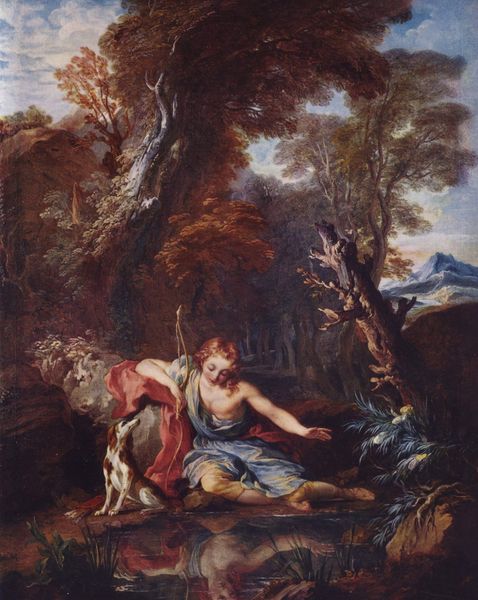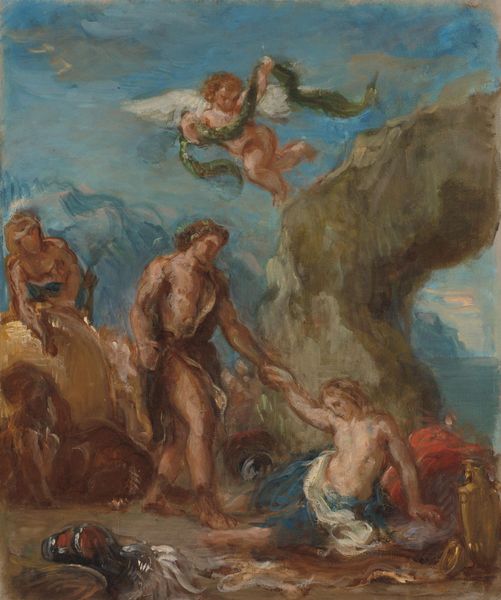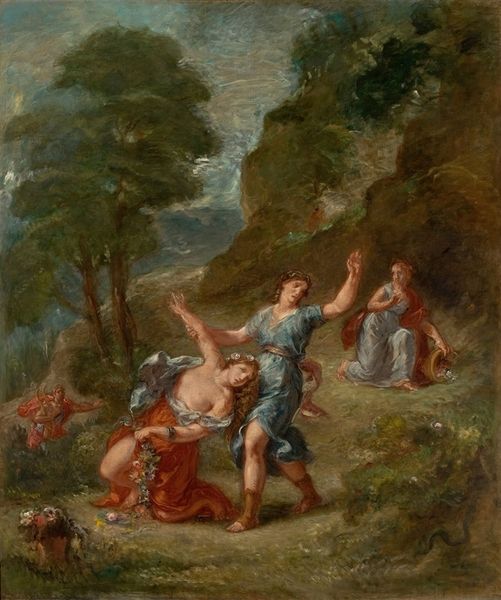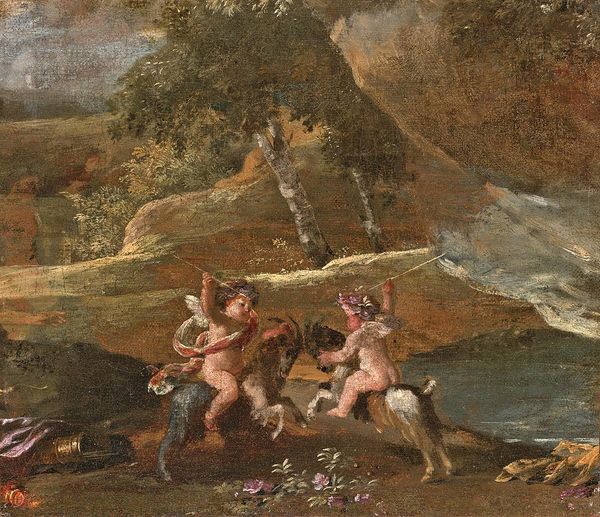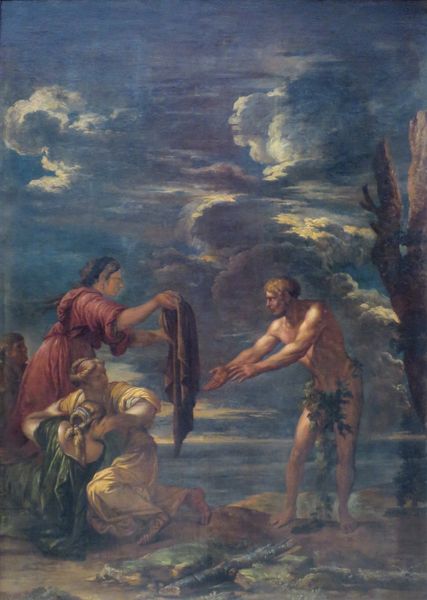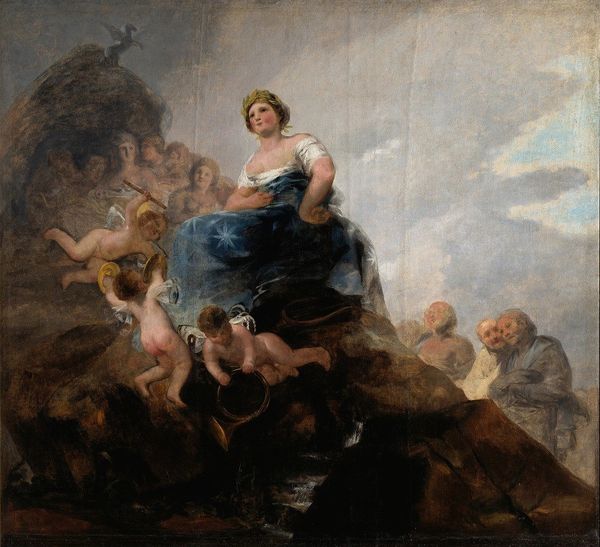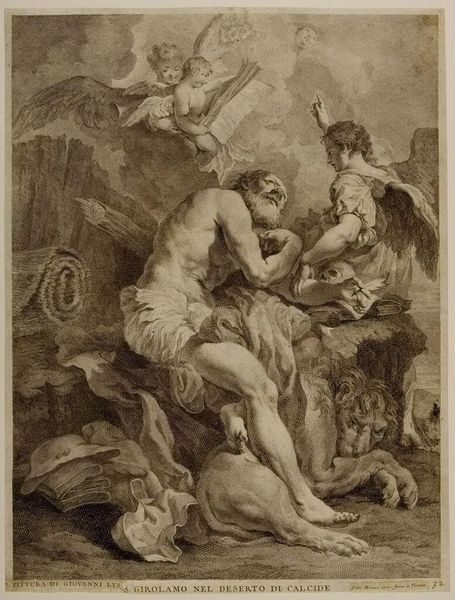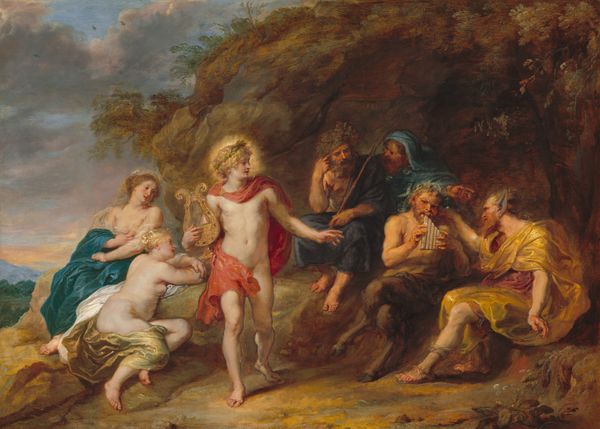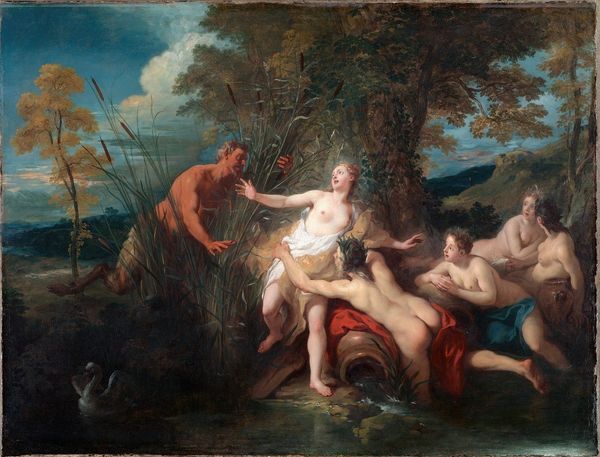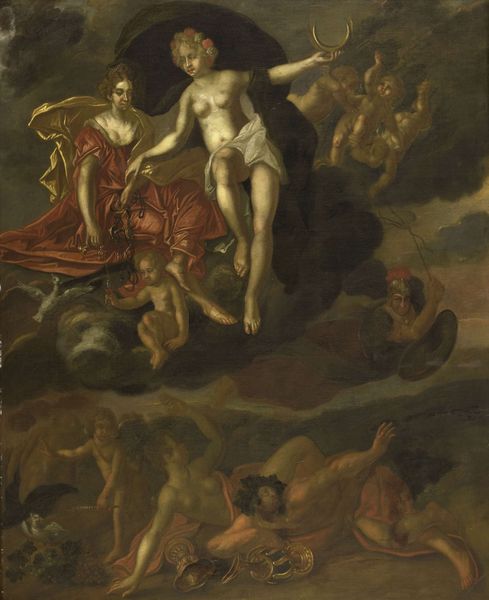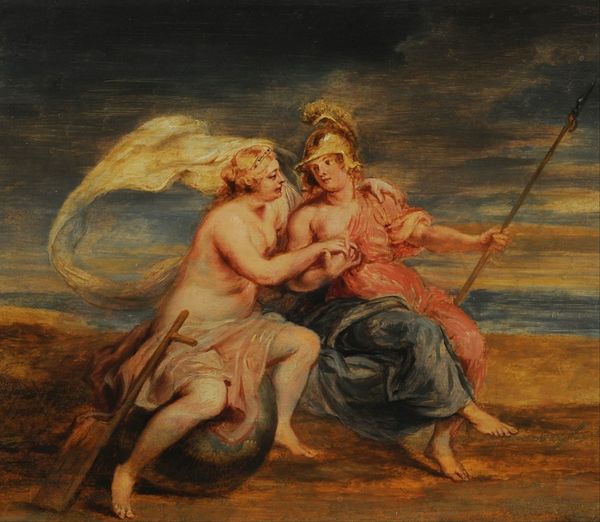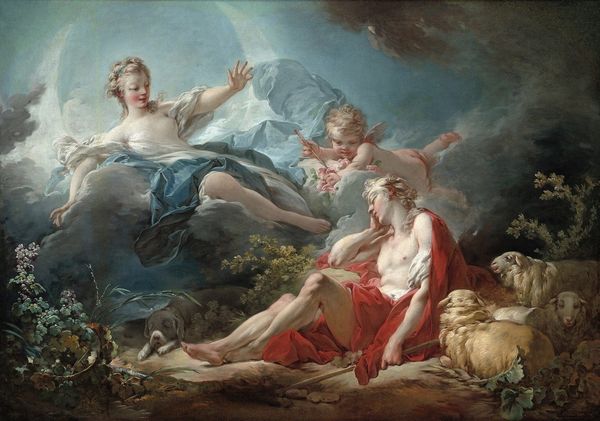
Copyright: Public Domain: Artvee
Editor: We're looking at Eugène Delacroix's "The Winter – Juno beseeches to destroy Aeneas’ Fleet," made with oil on canvas between 1856 and 1863. I find the dynamism really striking – there's such a strong diagonal sweep to the composition, it feels like everything is being pulled into the storm. What do you see when you look at it? Curator: I'm drawn to the formal interplay of color and light. Observe how Delacroix juxtaposes the warm, fleshy tones of the figures against the cool blues and grays of the tempestuous sky and sea. This contrast not only enhances the dramatic intensity but also guides the viewer's eye through the scene. What do you make of the brushwork? Editor: It seems pretty loose, especially in the clouds. Not a lot of sharp lines. Curator: Precisely. Notice how the artist uses these fluid, expressive strokes to convey the raw energy of the natural elements. The lack of precise contours blurs the distinction between the figures and their surroundings, suggesting a deeper connection between human emotion and the forces of nature. Does the materiality, the thick application of paint itself, evoke something specific for you? Editor: I guess it contributes to the drama... the impasto makes the scene feel almost tangible. Curator: Exactly. The textural surface underscores the artwork’s emphasis on conveying sensory experience through purely visual means. The subject matter provides the framework but ultimately, it’s the composition that evokes emotions. Editor: I never really considered just focusing on the composition and how that tells a story by itself. Thanks for this. Curator: My pleasure. Focusing on the formal aspects of art offers a powerful means of understanding and appreciating it.
Comments
No comments
Be the first to comment and join the conversation on the ultimate creative platform.
